The famous ten worst tornadoes in history are some of nature’s most violent storms, capable of devastating entire communities in moments. This overview presents the famous ten worst tornadoes in history, examining their causes and their impacts on affected areas.
Events like the famous Tri-State Tornado of 1925 and the Joplin Tornado of 2011 exemplify the destruction these storms can cause. Understanding these disasters is crucial for improving safety and preparedness. By studying their characteristics, we can better protect lives and property.
Worst Tornadoes in History
The Tri-State Tornado devastated multiple towns across Missouri, Illinois, and Indiana on March 18, 1925. Known for its unprecedented length and intensity, it caused significant destruction and loss of life, profoundly impacting the affected communities and highlighting the dangers of severe weather.
Worst Tornadoes Location and Timing
The Tri-State Tornado struck on March 18, 1925, traversing parts of Missouri, Illinois, and Indiana. It traveled approximately 219 miles, making it one of the longest tornado paths in history, occurring during the afternoon when many people were engaged in daily activities.
Worst Tornadoes Impact
The tornado caused widespread devastation, flattening entire towns and leaving a significant mark on the affected regions. Buildings were destroyed, infrastructure damaged, and communities disrupted, resulting in long-term changes in local landscapes and economies, highlighting the need for improved disaster preparedness.
Worst Tornadoes Casualties and Damage
| Category | Details |
| Fatalities | 695 |
| Injuries | Over 2,000 |
| Homes Damaged/Destroyed | Approximately 15,000 |
| Estimated Damages | Exceeding $16 million |
| Date | March 18, 1925 |
| Affected States | Missouri, Illinois, Indiana |
| Significance | Highlighted tornado dangers; led to advancements in meteorology |
The Daulatpur-Saturia Tornado

The Daulatpur-Saturia Tornado, which struck the Manikganj District in central Bangladesh on April 26, 1989, is considered one of the deadliest tornadoes in recorded history. With estimates of over 1,300 fatalities, this devastating natural disaster left an indelible mark on the region.
Daulatpur-Saturia Tornado Location and Timing
The tornado hit the Daulatpur and Saturia areas of the Manikganj District on April 26, 1989. This region, located in central Bangladesh, was particularly vulnerable due to its geographic and climatic conditions, which often lead to severe thunderstorms.
Daulatpur-Saturia Tornado Impact
| Tornado Characteristics | Details |
| Path Length | Approximately 80 km |
| Width | About 1.5 km |
| Area of Complete Destruction | 6 square km |
| Estimated Wind Speeds | 180 to 350 kph |
| Impact | Extensive damage to dwellings and infrastructure, uprooted trees |
Daulatpur-Saturia Tornado Casualties and Damage
The catastrophic impact of the tornado resulted in approximately 1,300 deaths and left 12,000 people injured. In addition, about 80,000 individuals were left homeless, as entire neighborhoods were flattened. The scale of destruction was overwhelming, with communities grappling with the loss of life and property.
Daulatpur-Saturia Tornado Significance
The Daulatpur-Saturia Tornado remains one of the deadliest tornadoes in history. This event highlights the vulnerability of communities to extreme weather events, particularly in regions with limited resources for disaster preparedness. The tragedy underscores the urgent need for effective disaster preparedness and early warning systems to protect at-risk populations. Improved infrastructure and community awareness can help mitigate the impacts of such devastating storms in the future.
Great Natchez Tornado

The Great Natchez Tornado, which struck Natchez, Mississippi, on May 7, 1840, is considered the second-deadliest tornado in U.S. history. It resulted in at least 317 deaths and 109 injuries. The tornado was incredibly destructive, causing widespread damage and devastation to the city.
Great Natchez Location and Timing
| Aspect | Details |
| Event | Great Natchez Tornado |
| Date | May 7, 1840 |
| Location | Natchez, Mississippi |
| Vulnerability | Situated along the Mississippi River |
| Onset | Sudden, catching many residents off guard |
| Consequences | Catastrophic damage and loss for the community |
Great Natchez Impact
The tornado caused widespread destruction across Natchez. It obliterated homes, businesses, and infrastructure. Entire neighborhoods were flattened, leaving the city in ruins. The devastation profoundly affected the local economy and the lives of those who survived, marking this event in history as a significant disaster.
Great Natchez Casualties and Damage
The tornado resulted in at least 317 deaths and 109 injuries. The high fatality rate was exacerbated by the lack of warning systems at the time. Many victims were caught in their homes when the tornado struck, leading to extensive loss of life and suffering in the community.
St. Louis-East St. Louis Tornado
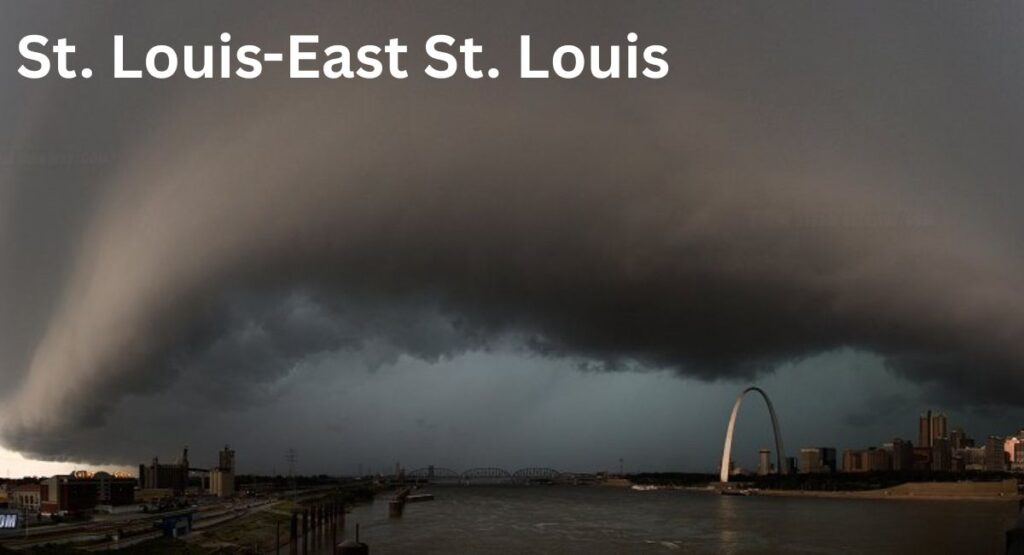
St. Louis is a major city in Missouri, known for its iconic Gateway Arch and rich history. East St. Louis, located in Illinois, lies directly across the Mississippi River. Both cities were densely populated, contributing to the tornado’s devastating impact.
St. Louis-East St. Location and Timing
The St. Louis-East St. Louis Tornado struck on May 27, 1896. It impacted the cities of St. Louis, Missouri, and East St. Louis, Illinois. The tornado formed during a severe thunderstorm, quickly gaining strength and causing devastation in densely populated urban areas, leaving little time for residents to react.
St. Louis-East St.Impact
The tornado caused catastrophic damage across both cities. It destroyed homes, factories, and infrastructure, significantly affecting local economies. The destruction of key landmarks, such as the Eads Bridge, added to the chaos. Fires broke out in the aftermath, complicating rescue efforts and further exacerbating the devastation.
St. Louis-East St.Casualties and Damage
The St. Louis-East St. Louis Tornado resulted in at least 255 deaths and over 1,000 injuries. Many victims were caught in their homes when the tornado struck. The extensive damage was estimated at around $10 million, a staggering amount for that time, highlighting the tornado’s severe impact on the community.
Flint-Beecher Tornado
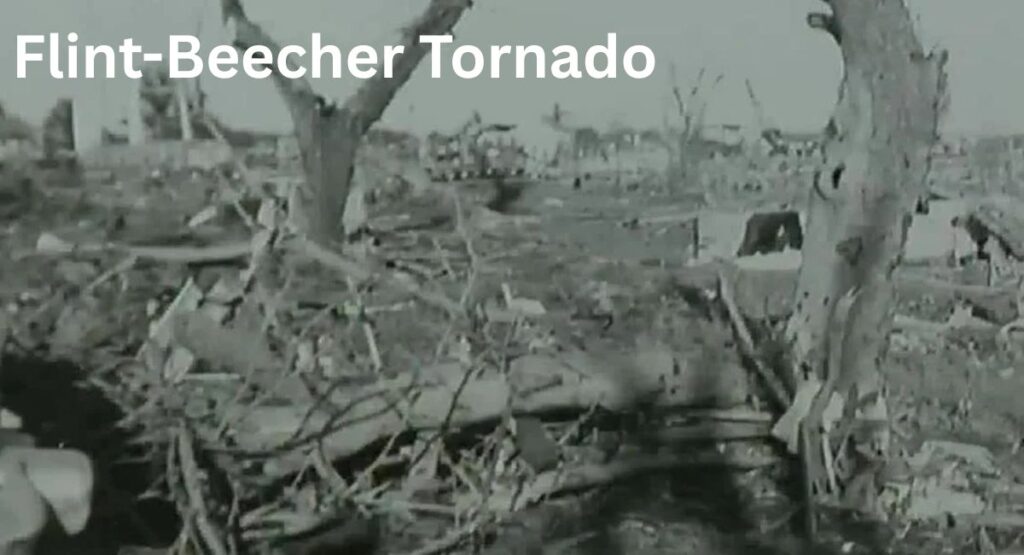
The Flint-Beecher Tornado struck on June 8, 1953, in Flint, Michigan, particularly affecting the Beecher district. This F5-intensity tornado is one of the deadliest in U.S. history, resulting in significant loss of life and extensive damage.
Flint-Beecher Tornado Location and Timing
The tornado hit Flint, Michigan, at approximately 8:30 PM EST on June 8, 1953. It primarily affected the Beecher district, an area characterized by residential neighborhoods. The storm developed rapidly, catching residents off guard and leading to catastrophic consequences.
Impact Flint-Beecher Tornado
The tornado carved a path of destruction primarily along Coldwater Road. It caused widespread devastation, including the destruction of homes and infrastructure. The intense winds obliterated buildings, uprooted trees, and left the community in chaos. This event highlighted the vulnerability of the region to severe weather.
Flint-Beecher Casualties and Damage
| Aspect | Details |
| Fatalities | 116 |
| Injuries | 844 |
| Homes Destroyed | 340 |
| Major Damage | 107 homes |
| Minor Damage | 153 homes |
| Total Damage | $19 million (1953 dollars) |
| Equivalent Damage | Over $216 million (2023 dollars) |
Worcester Tornado
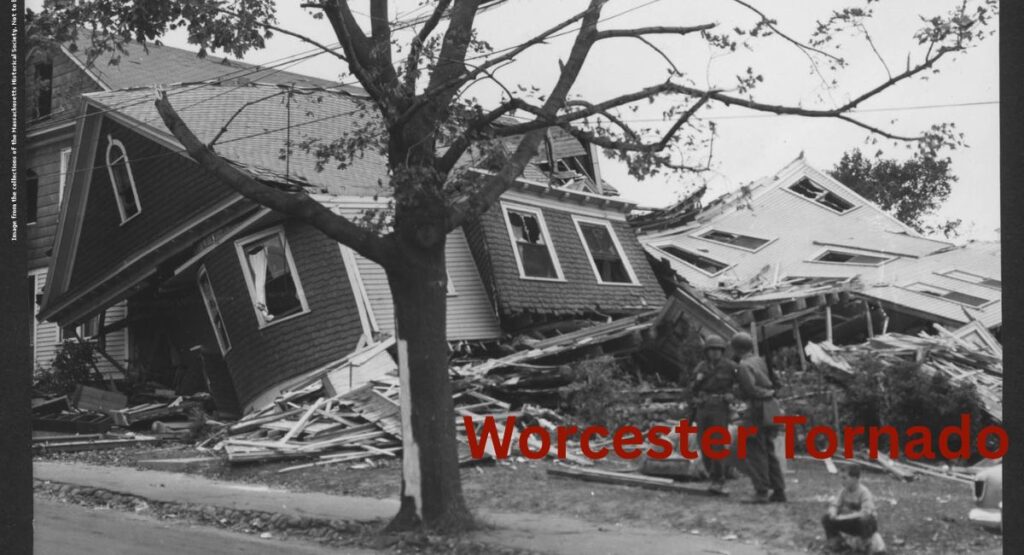
Worcester, Massachusetts, is a vibrant city known for its diverse cultural scene and rich history. As the second-largest city in New England, it offers various educational institutions, parks, and historic sites, making it a hub for arts, education, and industry.
Worcester Tornado Location and Timing
The Worcester Tornado struck on June 9, 1953, in Worcester, Massachusetts. It occurred during the late afternoon, rapidly developing from a severe thunderstorm. The tornado’s path extended through densely populated areas, catching many residents unprepared and leading to significant destruction.
Worcester Tornado Impact
The tornado caused extensive damage throughout Worcester, destroying homes, businesses, and infrastructure. Winds reached an estimated F4 intensity, leading to widespread devastation. The storm uprooted trees and downed power lines, complicating rescue and recovery efforts. The destruction transformed the landscape and impacted the community for years.
Worcester Tornado Casualties and Damage
| Aspect | Details |
| Fatalities | 94 |
| Injuries | Over 1,000 |
| Homes Destroyed | Approximately 1,200 |
| Significant Damage | Many additional homes affected |
| Total Damage | $52 million (1953 dollars) |
Goliad Tornado
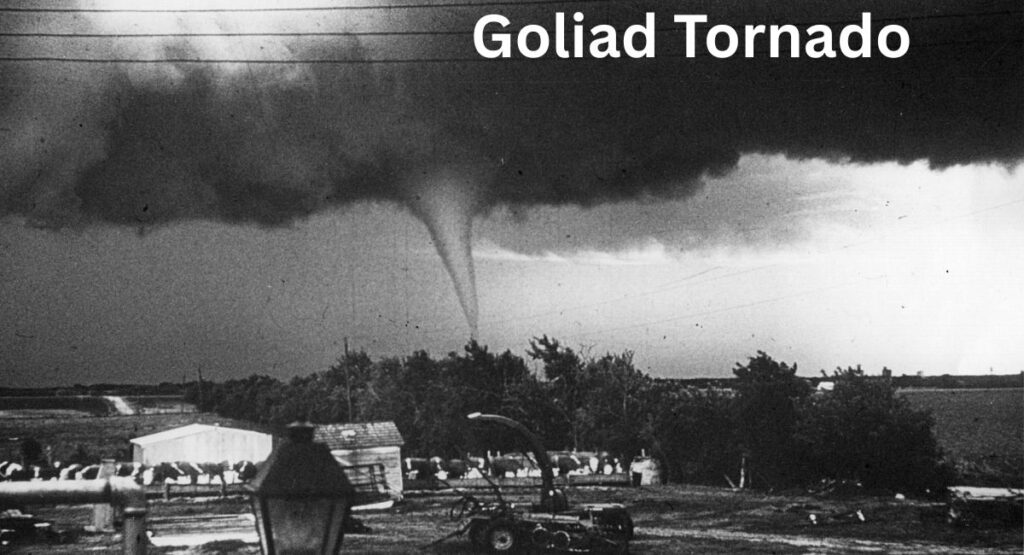
Goliad, Texas, is a historic city known for its pivotal role in the Texas Revolution. Rich in cultural heritage, it features colonial architecture and significant landmarks, attracting visitors interested in history and nature, while fostering a close-knit community atmosphere.
Goliad Tornado Location and Timing
The Goliad Tornado struck on May 18, 1902, in Goliad, Texas. It occurred in the late afternoon, during a period of severe weather. The tornado developed rapidly and moved through the town, catching residents by surprise and leading to widespread destruction.
Goliad Tornado Impact
The tornado caused extensive damage in Goliad, destroying homes, businesses, and agricultural structures. Winds were reported at F4 intensity, leading to severe devastation. The storm uprooted trees and downed power lines, significantly disrupting the community and complicating rescue efforts in the aftermath.
Goliad Tornado Casualties and Damage
| Aspect | Details |
| Fatalities | 114 |
| Injuries | Over 200 |
| Homes Destroyed | Approximately 300 |
| Major Damage | Significant damage to local infrastructure |
| Total Damage | $1 million (1902 dollars) |
Tupelo-Gainesville Tornado Outbreak

Tupelo, Mississippi, is known for its musical heritage, particularly as the birthplace of Elvis Presley. Gainesville, Georgia, is recognized for its strong poultry industry and scenic lakes. Both cities have rich histories and vibrant communities, impacted significantly by the 1936 tornado outbreak.
Tupelo-Gainesville Location and Timing
The Tupelo-Gainesville Tornado Outbreak occurred on April 5-6, 1936, affecting areas in Mississippi and Georgia. The tornadoes formed during a severe weather system, striking Tupelo, Mississippi, and Gainesville, Georgia, in the evening hours. The outbreak produced multiple tornadoes over a short period.
Tupelo-Gainesville impact
The outbreak caused extensive destruction across both cities. The Tupelo tornado was particularly severe, leveling neighborhoods and causing significant damage to businesses and infrastructure.
READ THIS BLOG:Top 10 Oldest Countries in the World You Must Know in 2025
The Gainesville tornado also wreaked havoc, destroying homes and uprooting trees, leading to widespread chaos and complicating rescue efforts.
Tupelo-Gainesville Casualties and Damage
| Aspect | Details |
| Fatalities | Around 200 |
| Injuries | Over 1,500 |
| Homes Destroyed | Approximately 2,000 in Tupelo |
| Devastation in Gainesville | Similar destruction |
| Total Damage | Exceeded $5 million (1936 dollars) |
Joplin Tornado
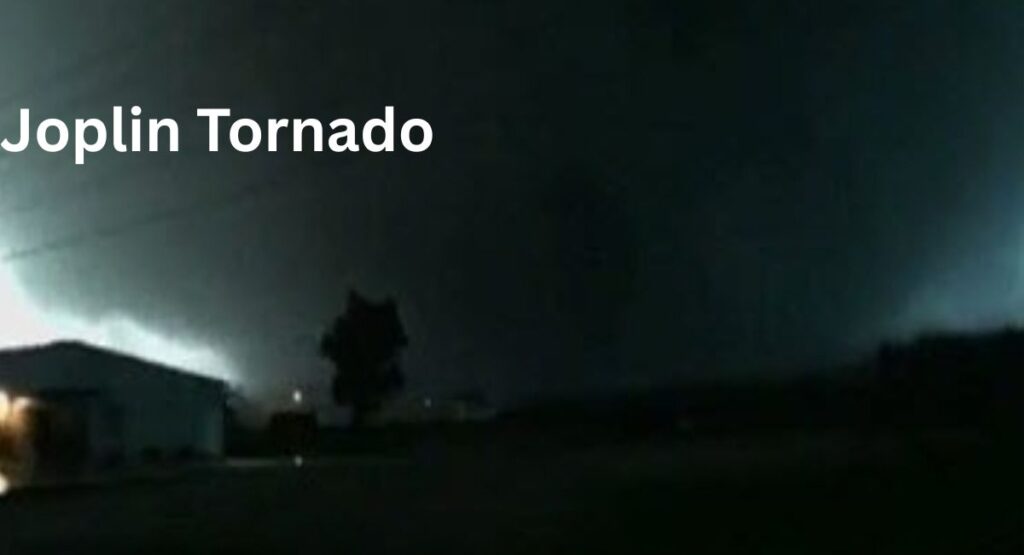
Joplin, Missouri, is a city with a strong sense of community and resilience. Known for its historic downtown and vibrant arts scene, it serves as a regional center for healthcare and education, facing challenges and rebuilding after the devastating 2011 tornado.
Joplin Tornado Location and Timing
The Joplin Tornado struck on May 22, 2011, in Joplin, Missouri. It occurred in the late afternoon, developing rapidly from a severe thunderstorm. The tornado moved through the city, impacting densely populated areas and causing catastrophic damage in a matter of minutes.
Joplin Tornado Impact
The tornado caused widespread destruction across Joplin, leveling entire neighborhoods and destroying businesses. With winds estimated at F5 intensity, it resulted in severe damage to infrastructure, including schools and hospitals. The storm’s rapid onset left residents little time for preparation, exacerbating the disaster’s impact.
Joplin Tornado Casualties and Damage
| Aspect | Details |
| Fatalities | 158 |
| Injuries | Over 1,000 |
| Homes Damaged/Destroyed | Approximately 7,500 |
| Displaced Residents | Many |
| Total Damage | Exceeded $2.8 billion |
Woodward Tornado
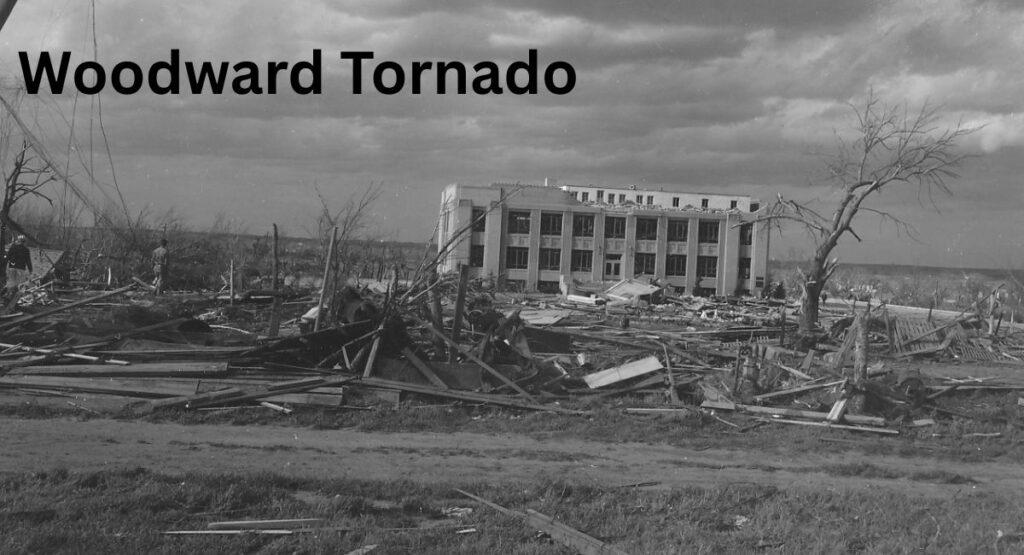
Woodward, Oklahoma, is a small city known for its rich history and vibrant community. Located in the northwestern part of the state, it serves as a regional hub for agriculture and commerce, with a strong sense of local identity
Location and Timing Woodward Tornado
The Woodward Tornado struck on April 9, 1947, in Woodward, Oklahoma. It occurred in the late afternoon, developing rapidly from severe weather conditions. The tornado moved through the town, impacting residential areas and commercial buildings in a short but devastating timeframe.
Woodward Tornado impact
The tornado caused extensive destruction throughout Woodward, leveling homes and businesses. With winds estimated at F5 intensity, it devastated entire neighborhoods and uprooted trees. The rapid onset of the storm left little time for residents to seek shelter, significantly increasing the disaster’s impact.
Woodward Tornado Casualties and Damage
| Aspect | Details |
| Fatalities | 107 |
| Injuries | Over 200 |
| Homes Damaged/Destroyed | Approximately 1,000 |
| Displacement | Widespread |
| Total Damage | Around $3 million (1947 dollars) |
Frequently Asked Questions?
What conditions led to the famous Tri-State Tornado in 1925?
Warm, moist air from the Gulf collided with cold, dry air from Canada, creating severe storm conditions.
How did the Joplin Tornado’s impacts differ from earlier tornadoes?
The Joplin Tornado in 2011 caused 158 deaths and extensive destruction in a densely populated area, highlighting preparedness gaps.
What lessons from famous tornadoes improve disaster preparedness?
They stress the need for early warning systems and community safety education to reduce casualties.
Which regions are most vulnerable to famous tornadoes?
“Tornado Alley” in the central U.S., particularly Texas and Oklahoma, is most vulnerable due to geographical factors.
How has meteorology enhanced our prediction of famous tornadoes?
Advances in Doppler radar and modeling have improved prediction accuracy and enabled timely warnings.
What is the deadliest tornado in the world?
The deadliest tornado in recorded history is the Daulatpur–Saturia Tornado, which struck Bangladesh on April 26, 1989.
Conclusion
In conclusion, the famous ten worst tornadoes in history serve as stark reminders of nature’s power and unpredictability. Each event, including the devastating Tri-State Tornado and the Joplin Tornado, highlights the catastrophic impact these storms can have on communities, resulting in loss of life and significant property damage.
Understanding the causes and consequences of these famous tornadoes is essential for enhancing our preparedness and response strategies. As we learn from these historical events, we can improve safety measures, develop better warning systems, and ultimately mitigate the risks associated with future tornado occurrences.

tina Morris is an experienced blogger and a passionate wordsmith at dofollowtips. With a keen eye for language and a deep love for writing, she shares insightful posts on grammar, phrases, and the art of communication.